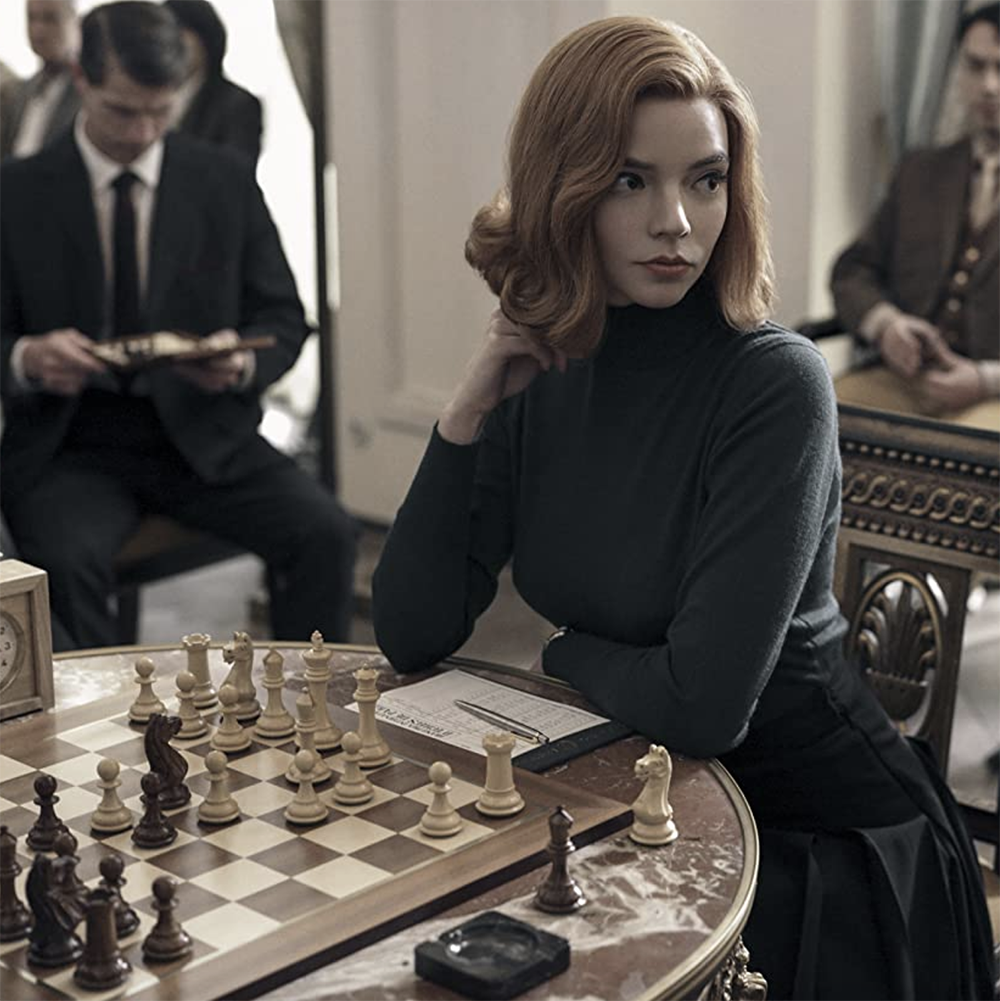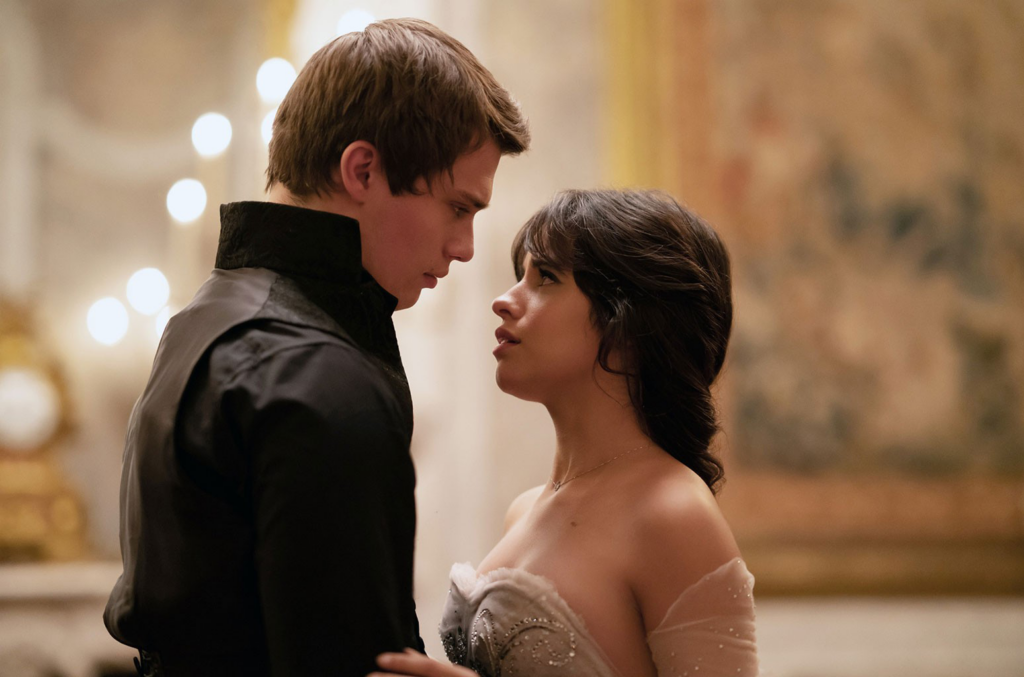★★★★☆
Tackling a subject as niche and inaccessible as competitive chess is an ambitious move for a series; however, “The Queen’s Gambit” does so with style, turning chess matches into adrenaline-inducing battles. The seven-episode Netflix miniseries is thrilling, featuring talented acting and masterful costume design, even if the plot is not quite as impressive by comparison.
“The Queen’s Gambit” takes place during the Cold War-era in the United States, and follows young orphan Elizabeth “Beth” Harmon on her journey to becoming the highest-rated chess player in the world. With 24-year-old Anya Taylor-Joy in the leading role, the series also features Thomas Brodie-Sangster and Harry Melling in supporting roles.

The series opens in Paris in the late 1960s to an obviously hungover Beth Harmon waking up in a lavish hotel room before swallowing some pills, pulling herself together and rushing to an imposing chess match. This mysterious opening scene sets a precedent for the rest of the show, which tackles addiction, race and suicide.
The strongest aspect of “The Queen’s Gambit” is by far the costuming. Costume designer Gabriele Binder chose to reflect Beth Harmon’s personal evolution in her clothing, from her girlish embroidered dress as a child to her final outfit, a white coat and matching hat that evokes a chess piece itself. Beth’s clothing additionally changes with the time period: Her high school outfits feature the flared skirts of the 1950s, while her style as an adult is much more Audrey Hepburn-esque.
Binder’s artistry extends beyond the main character’s wardrobe. Brodie-Sangster, who plays the southern chess star Benny Watts, is constantly clad in entirely black ensembles with a cowboy hat and long leather coat to match.
Each supporting character is masterfully shaped through their clothes, which makes the talented performances from all the actors and actresses all the more enjoyable. Since Beth Harmon is an extremely quiet character, Taylor-Joy and the rest of the cast members had to work diligently to convey the emotions that come through in this series with subtlety, and their hard work pays off.
Although Taylor-Joy and Brodie-Sangster provide incredible performances, the breakout star of the series is no doubt newcomer Moses Ingram, in her role as Beth’s childhood friend, Jolene. Melling, no longer the child that played Dudley Dursley in the “Harry Potter” series, is excellent as the smitten chess tutor.
The actors’ compelling performances are necessary to truly convey the seriousness of the issues the show explores. The series does an excellent job tackling the subject of addiction, especially in terms of the mental illness as a lifelong issue. Beth begins taking tranquilizers as a child in her orphanage, and from there her self-destruction waxes and wanes with her personal success. Watching the main character battle with her own mind becomes the most thrilling conflict of the show.
The show takes a strong stance on the sexism of the chess community. As Beth becomes increasingly competitive, we see her opponents consistently underestimate, sexualize and hate her. Nearly every struggle that Beth faces is somehow tied to misogyny, which is ultimately one of the most impressive parts of the plot.
“The Queen’s Gambit” manages to make the inaccessible game of chess relatable to the audience. No background knowledge of the game is needed; the audience learns the ins and outs of each match alongside Beth Harmon herself. The competitions are reminiscent of battlegrounds, allowing the audience to become invested in the movement of the pieces on the board.
In spite of these strong suits, there is one instance in which “The Queen’s Gambit” falls glaringly short. At one point in the series, Beth’s poor financial decisions lead her to accept money from her friend Jolene in order to further her chess career. In a racist illustration, the white main character takes money from a Black woman saving for law school. Although Beth’s actions are not praised in the show, she is not condemned for her actions either. She chooses her own success over the well-being of a woman of color. The show itself is not perpetuating racism, but it does not take a strong enough stand against it, either.
Regardless of the historical accuracy of this particular plot point, it casts an ugly shadow over the remainder of the series, making it difficult to appreciate any success Beth garners after accepting the money. It is a disappointing divergence from a plot that is otherwise well done, and leaves the audience with a deep sense of frustration.
“The Queen’s Gambit” is beautifully executed in terms of acting, costuming, set design and writing, yet the failure of a single plot point turns the series sour. The series is undeniably worth a watch, but at the same time, its shortcomings must be recognized.














